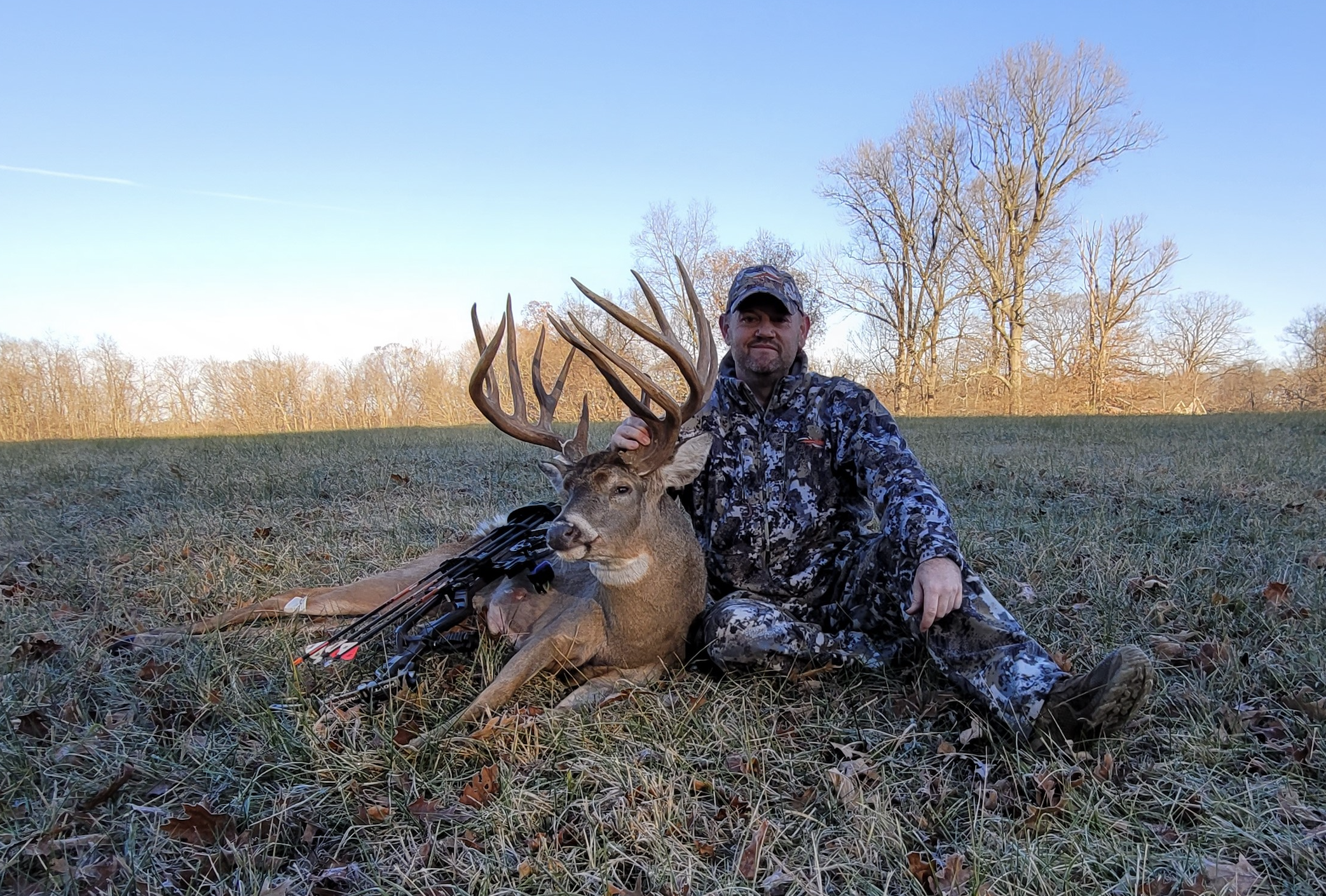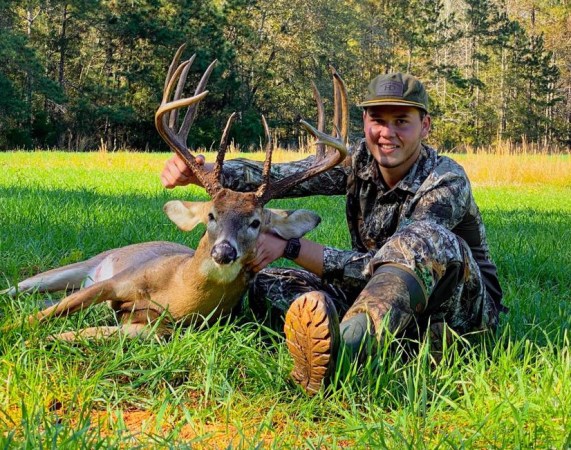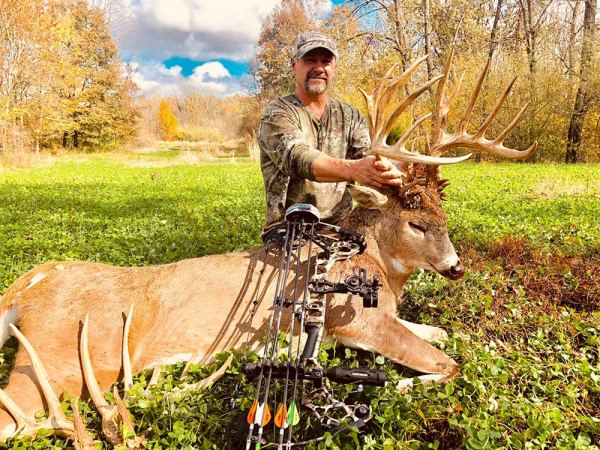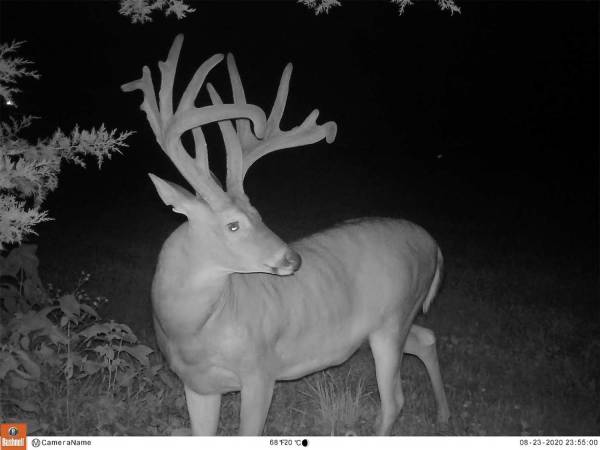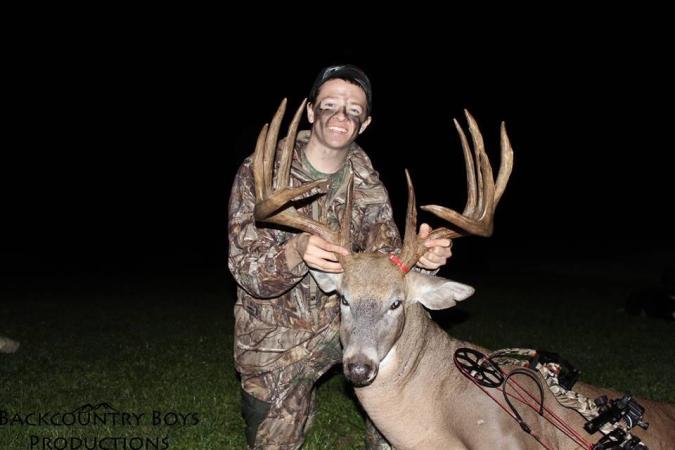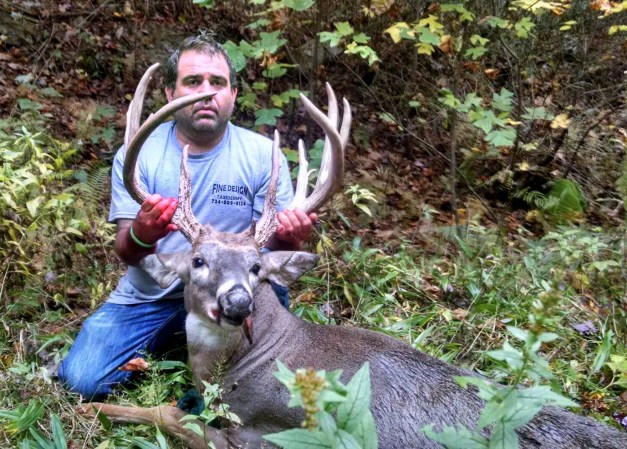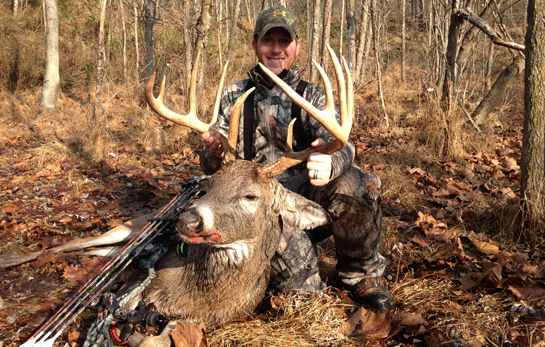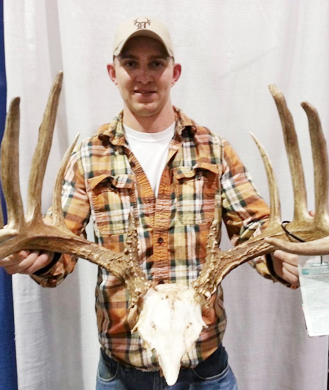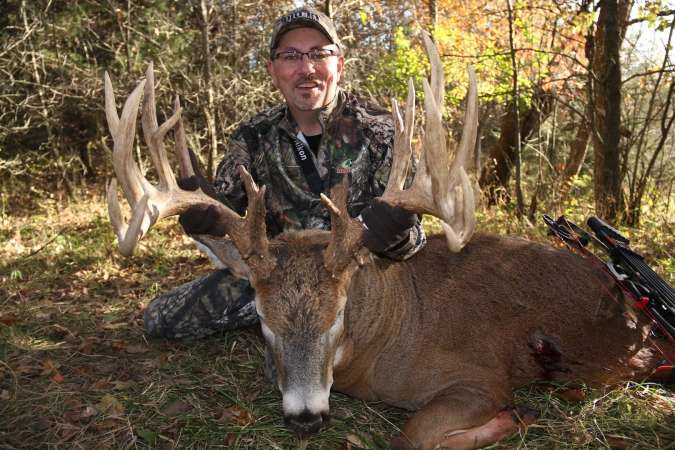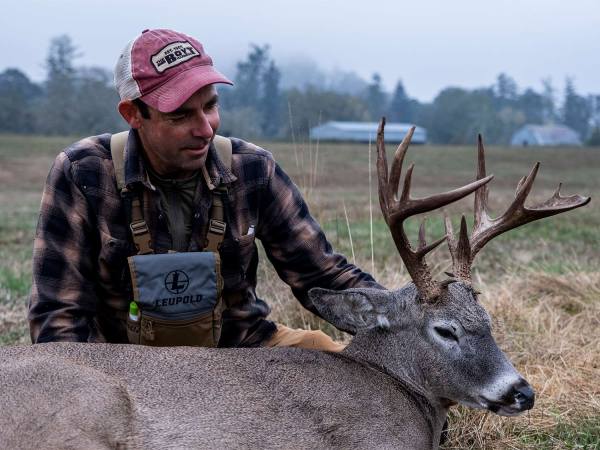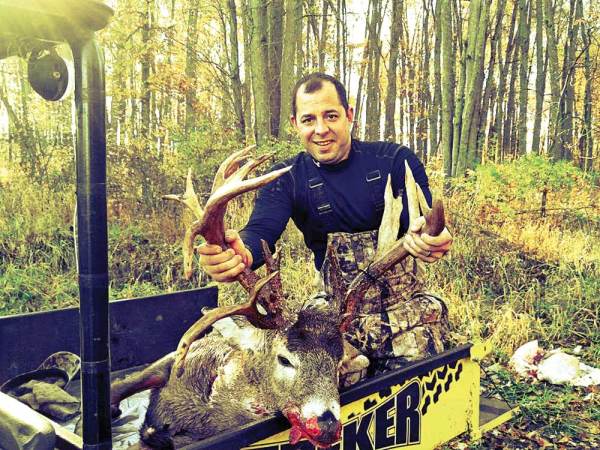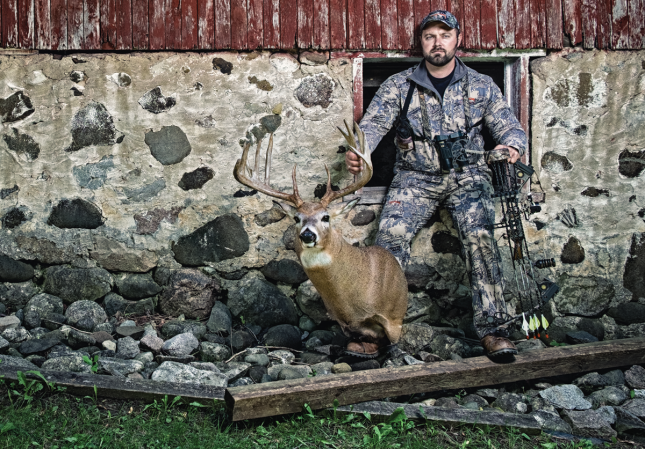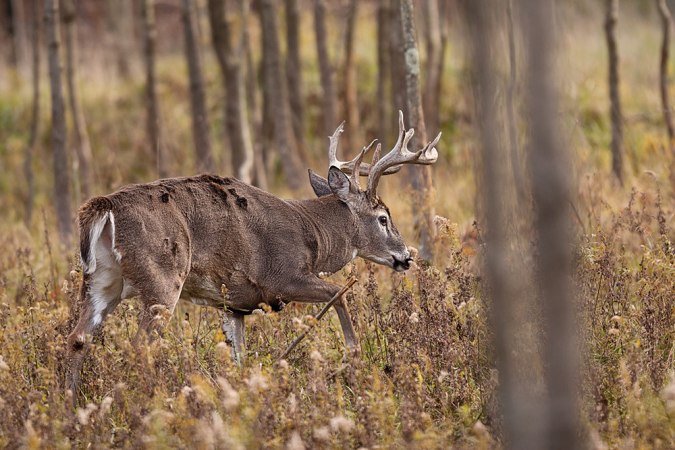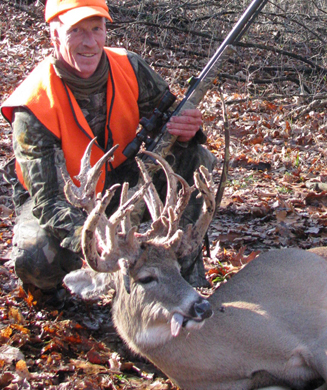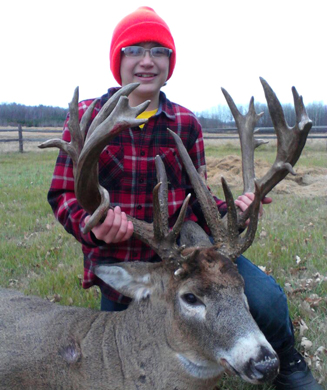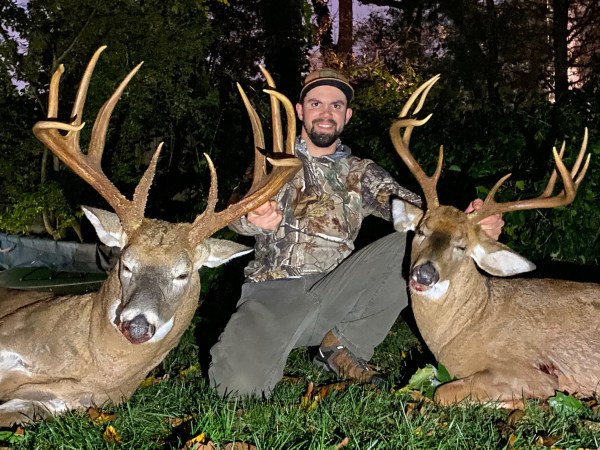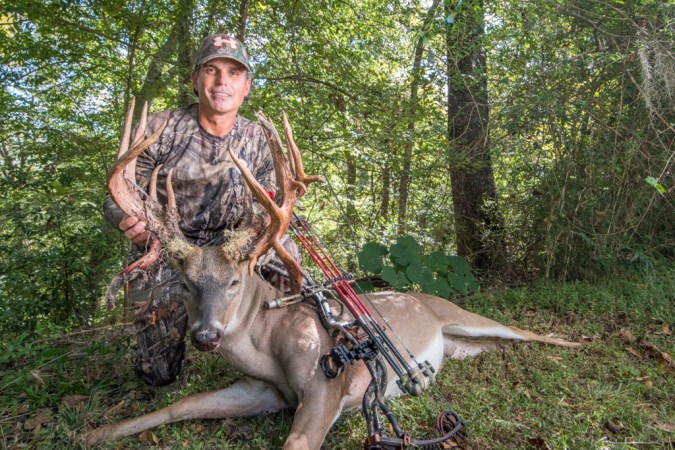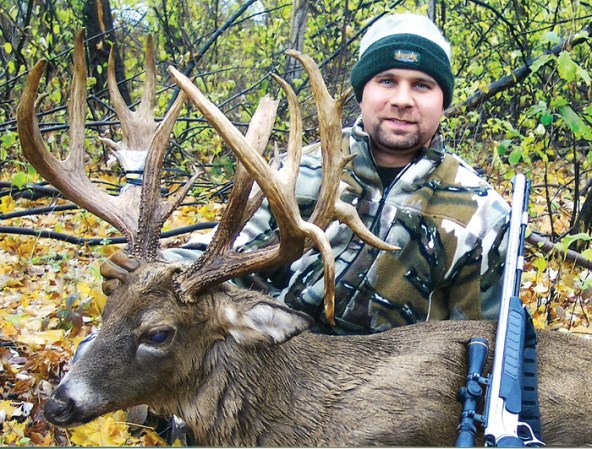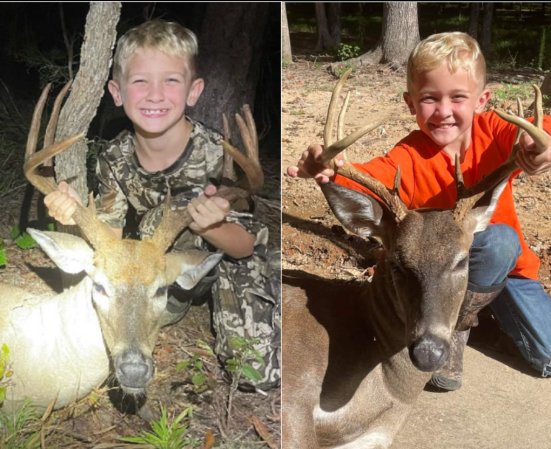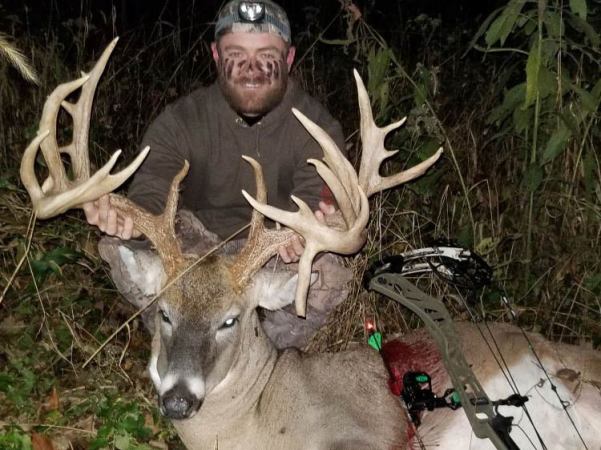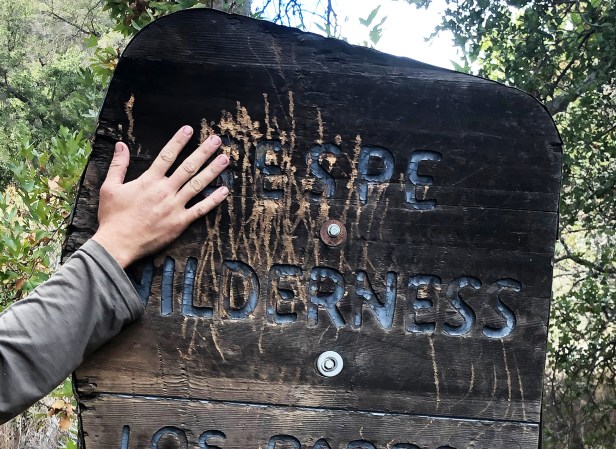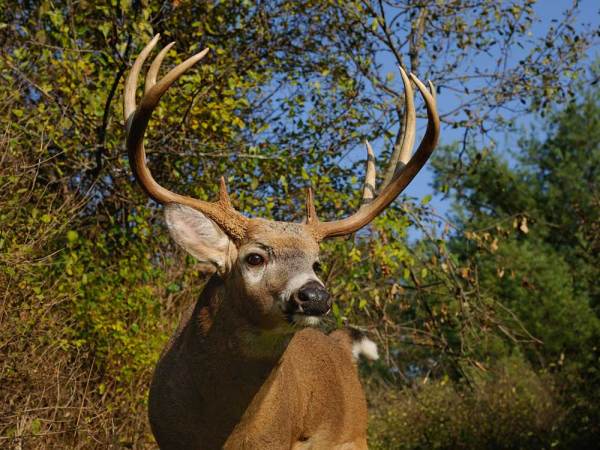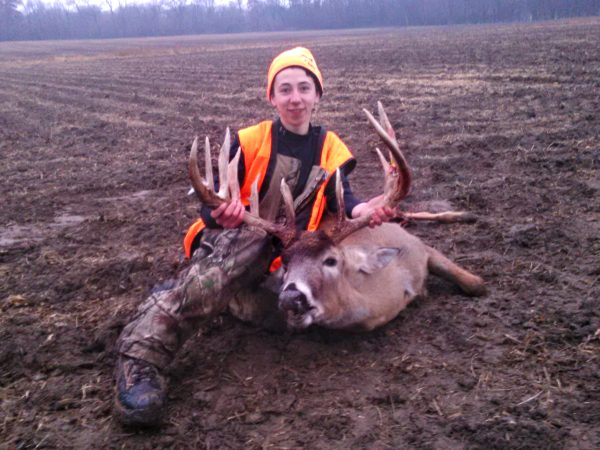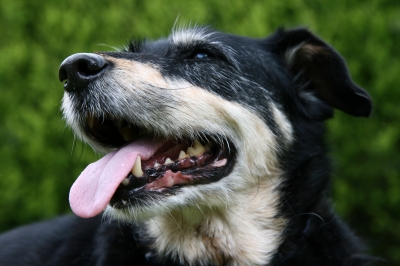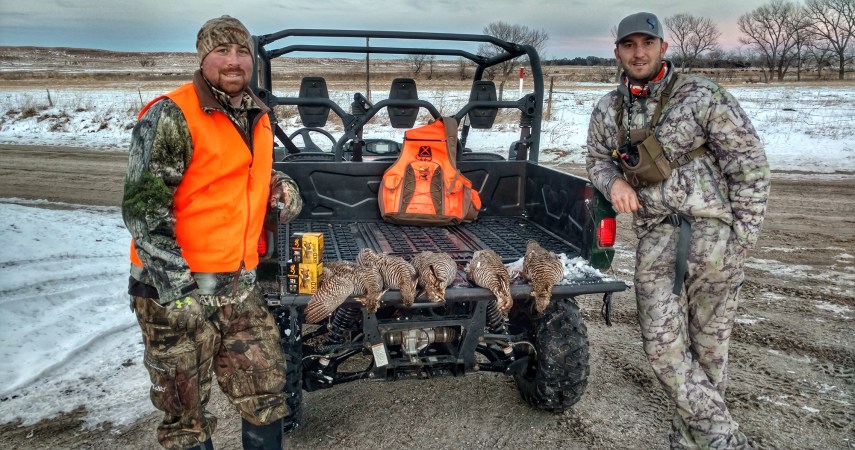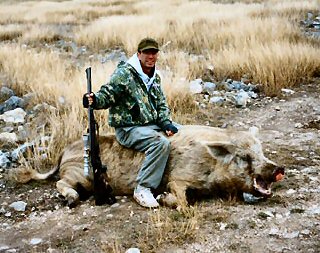Some deer hunters spend their whole lives dreaming of a record-book buck. Few find themselves on the other side of that mountain. So what happens when it’s all over? How do you keep climbing, when the biggest deer you’ll likely ever encounter is behind you? What’s there to look forward to?
Plenty, if you’re Brent or Justin Cearlock. Such questions might plague hunters stuck in seasons past, but the Cearlock brothers and their buddies aren’t one-hit wonders. In 2018, their buddy Luke Brewster killed the world-record whitetail on the farm they all hunt together in Eastern Illinois. Brewster made a perfect shot and notched the tag, but his individual success was made possible through a team effort: hard pre-season work, judicious hunting pressure, and careful age-structure management. The Cearlock brothers killed big deer before the world-record arrived in their woods, but the collective hunt for that 328-inch non-typical wasn’t the peak. It was the beginning of a new era.
To jump ahead to a particular hunt, click on one of the subcategories:
2019: The Massive Typical, The Gray Ghost, Breaking 200, Perfect Unison
2019: The Massive Typical
The buck Brent came to think of as the 6×5 first caught the Cearlock’s attention in 2017, when the deer was three years old. When the buck jumped into the mid-150s the following season, the bowhunters took notice. Agreeing to pass deer on this particular property was tricky, since there was a chance a neighbor might shoot the 4-year-old deer. But the brothers decided to risk it. And early that November—on his birthday—Brent stuck to the plan.
“I had him come in and stand about 15 yards from me at first light,” says Brent. “I just decided to pass him, hoping that he could make it. I really thought he had the potential to do something special if he could get to 5 years old.”
Trail cameras had captured the buck all over the farm, but that was the only in-person encounter the Cearlocks had with the buck that year. They kept tabs on him as the gun and muzzleloader seasons came and went.
“Each time we hit one of those hurdles, I’d go back in a week or so later and check cameras,” says Brent. “And sure enough, he’d be back on there. So I was fairly confident that he survived [the 2018 season].”
RELATED: The World-Record Buck, Episode 1
That summer, the 6×5 made another leap in antler growth, and he wasn’t a 6×5 anymore. He reappeared on camera on August 2, 2019, and it was clear even through thick velvet that he carried excellent mass. Once the buck shed his velvet, his range shrunk to a small section of the farm.
“People talk about patterning deer and patterning bucks,” says Brent. “We run a lot of cameras and we might see some tendencies from time to time, but I don’t really see patterns that you can put your name on. But this deer was on camera 15 days out of 31 days in October—and that’s just a single camera covering a 10- or 20-acre area. He was just locked in on that spot.”
All the photos were captured just before daylight or just after dark, and the Cearlocks knew he had to be bedding close. On Oct. 11, Brent hung a stand for a west wind on the border of a small food plot and some standing corn. He hunted it that evening. Brent watched as the buck he’d been hoping to see stood in the corn, and walked into a thicket 100 yards away. Thirty minutes later the deer reappeared, working a licking branch at 60 yards but never coming closer.
Brent saw the buck one more time, a week later when the wind was finally right again. He bumped a deer in the morning; a trail camera photo later revealed it was the buck. That evening the deer returned to hit a scrape near the stand. It was so dark, Brent didn’t even pick up his bow.
On Halloween, Brent and Justin both took the afternoon off from their jobs at the Illinois Department of Transportation. All season, Justin had been letting Brent take the first pick of stands on the farm. Justin had already killed one buck, and Brent had done all the pre-season work on this particular farm. But with crummy, windy weather blowing through, Brent decided to skip his hunt and spend the evening with his son instead.
“Well, if you don’t mind,” Justin told his brother, “I’d like to go sit that stand”
“Go for it,” Brent replied. “I’m not in there, so you might as well.”
Around 3 p.m., Justin climbed into the same walnut tree Brent had been hunting, sandwiched between a half-acre food plot and the standing corn. Despite the limbs on the trees, he felt exposed. He was seated when two little bucks ran underneath him, and after spending nearly 40 minutes trying to stand up without getting busted, he just stayed standing for the rest of the hunt.
“Most of the evening went by, and I kept watching the cornfield in that open spot,” says Justin. “And I literally just saw antlers stand up. As soon as I saw it, I was like, Oh that’s him.”
Just as the buck started toward his stand, a little buck ran into the plot, spooking the 5-year-old in the opposite direction.
“He stood there for like 10 minutes. In your mind you’re just willing him, C’mon turn around, turn around, you want to come this way, turn around, turn around.”
At last the buck turned, and committed.
“He was not messing around,” Justin says. “He wasn’t trotting, but he was on a dead walk. You could tell he was not comfortable out in that plot with that wind, he wanted to get across to the woods. I really didn’t know if he would even hear me if I stopped him, but I would’ve preferred him to stop on his own. He got through my first lane, and I let him go to the second lane.”
The deer stopped, and Justin released. He watched his lighted nock bounce away through the timber, and off the property.
“My first text to Brent was, Well I shot him, but I don’t feel good about it.”
Justin sat in the tree another 30 minutes, then climbed down and walked straight out. Before he even made it back to the truck—a five-minute walk—Brent and Ron Wagoner, Justin’s brother-in-law and another one of their hunting buddies, had already secured permission to search the neighboring property. Even so, they opted to wait until morning.
“If he’s dead now, he’ll be dead in the morning,” Justin said of their decision. “If he’s not dead now, we’re going to wish we had waited.”
Brent, meanwhile, tried to keep Justin’s spirits up.
“My initial reaction that night was concern,” Brent says, referring to the hit, in the buck’s ham. “My stomach kind of sunk at first that we might not find him, but pretty quickly I recovered and was trying to be positive. I was looking at my DeerCast app, telling him, ‘Looks like you got the artery’.”
Both brothers are colorblind—”unless it’s just like a paint can you poured out there, it’s pretty difficult for us to pick out a sparse blood trail”—so the next morning their dad joined Justin to help search. When Brent’s phone rang and he saw Justin’s caller ID pop up, he knew they had found the deer.
The trail might as well have been painted on the undergrowth. Their dad immediately spotted blood—not just droplets underfoot, but sprayed six feet away from the trail. The 6×5, now a 7×6, had barely made it 50 yards before piling up in a thicket just off the property.
Justin taped him out at 182 and change. At the time, it was the highest-scoring buck either brother had ever killed.
The Gray Ghost
Then fall of 2020 brought another pair of milestones.
An odd-colored deer Brent had on camera since 2016 was still hanging around the farm, and the brothers figured he was at least 7 years old. His antlers wouldn’t score anything close to Justin’s typical from 2019, but that didn’t matter. This old buck topped Brent’s list. He had only seen the deer in person once, out of range the previous season. Then Nov. 11, 2020, arrived, and Brent saw roughly a dozen bucks that morning.
“I passed a phenomenal deer that morning—the biggest buck I’ve ever let walk in my life,” Brent says. “He’s already in his mid 160s, flirting with the 170-inch mark as a 4-year-old deer. I called him Will, because I didn’t know if I would have the willpower to pass him.”
Instead of reaching for his bow, Brent picked up his phone to shoot some video of the giant typical. It walked by Brent, broadside at 20 yards, before slipping by at 10.
Well, I just had Will at 10 yards, he joked in a text to Justin and Wagoner, I hope I get rewarded with Gray Ghost.
Barely 45 minutes later, a doe popped out of a bedding area with a familiar light-colored deer on her tail. That long morning made up for all those years Gray Ghost had remained hidden; Brent watched the old deer follow the doe for half an hour before the pair bedded down at 80 yards…and stayed there for 2.5 hours.
“I was dying,” Brent says. “I needed to pee, I hadn’t sat down, it was nearly 10 a.m. and I’d been standing since 6 a.m. I felt like I couldn’t move.”
He could see the buck’s antlers, but without a view of the doe Brent couldn’t be sure it was safe to reposition. At last, a young buck appeared and beelined for the doe, pushing the pair to their feet. At first they group moved off in the wrong direction, but then the doe came back, pulling the old buck 15 yards past Brent’s tree—but without a shot.
RELATED: The World-Record Buck, Episode 2
“The day I hung my stand in August it was hot, and I’d already hung two other stands. I’d trimmed it some, but I was beat. So I didn’t get all the trimming done that I really needed. And now I’m sitting there staring at him, thinking, I’m not going to get a shot at this deer. I’m going to have him at 10 yards and I’m not going to get him killed.”
For the second time that morning, another buck shifted the odds in Brent’s favor. A 140-inch 4-year-old approached the doe from the opposite side of the creek. The old buck cut between his doe and the interloper and, in doing so, stepped into the open, just seven paces from Brent’s tree.
Brent released, and the buck bolted. He felt like the hit was a touch low, due to the steep angle, so he erred on the side of caution and stayed put for another hour. When he climbed down after noon, he checked his arrow before backing out. It was coated in blood.
Brent returned four hours later to pick up the trail for 50 yards before losing it, then backing out. He recruited the neighbor to help the next morning, as well as a volunteer tracker with a bloodhound. Brent looked for just 15 minutes before backing out a second time, not wanting to lay down his own scent and make things difficult for the dog. When the tracker and his hound arrived just after noon, it only took them 10 minutes to find Brent’s buck, lying 200 yards from his stand.
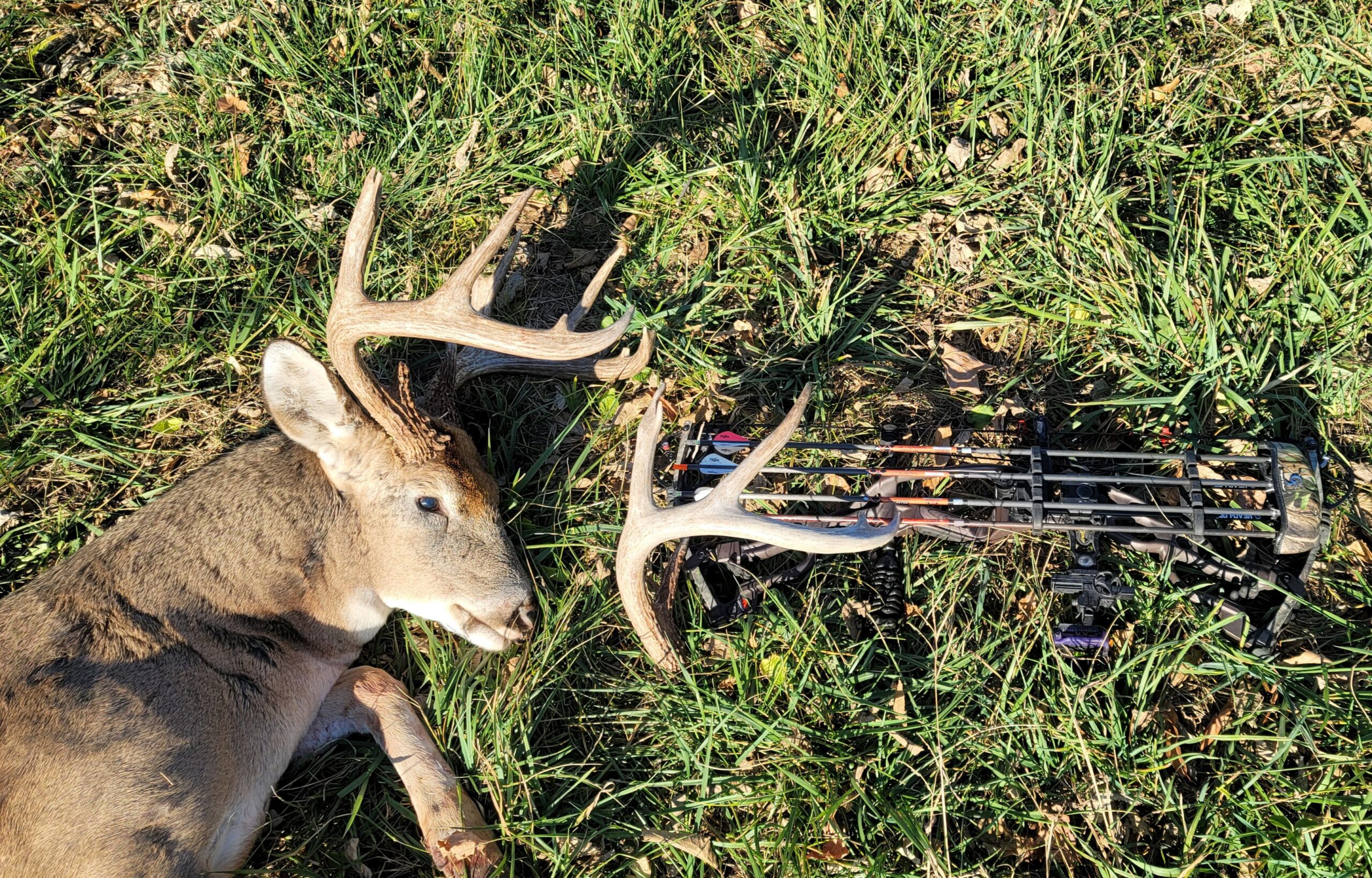
The first thing the tracker noticed wasn’t the size of the buck’s antlers, which Brent says score somewhere between 145 and 150, but its head. The deer weighed 222 pounds, dressed, and trail camera pictures of him before the rut suggested the deer’s true weight was more like 280 pounds. It’s Brent’s oldest buck to date.
“There were a couple bigger, higher-scoring bucks on the farm,” Brent says, who has one of Gray Ghost’s sheds from a few years ago. “But he was under my skin.”
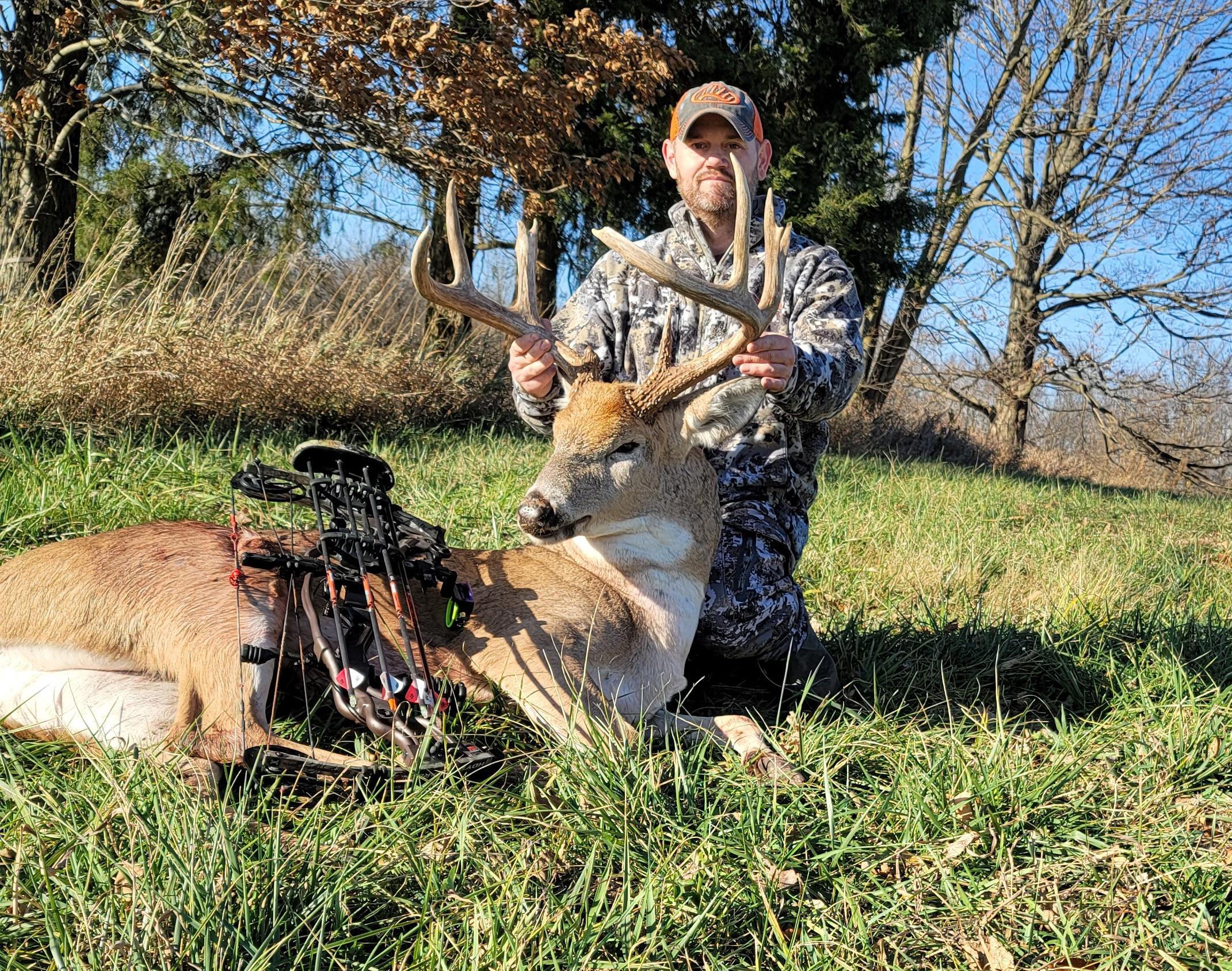
Breaking 200
Most of the deer the Cearlocks target (and eventually tag) are bucks that live on the farms where they hunt. It’s rare for them to kill a deer that they don’t have trail camera photos of, not because they’re unwilling to shoot an unfamiliar deer necessarily (though unfamiliar deer can be trickier to age), but because it’s difficult to hunt such nomadic deer. It happens occasionally, though, like when Luke Brewster killed a great buck in 2019, on the heels of his 2018 world-record. The Cearlocks didn’t have a single trail camera picture of that deer.
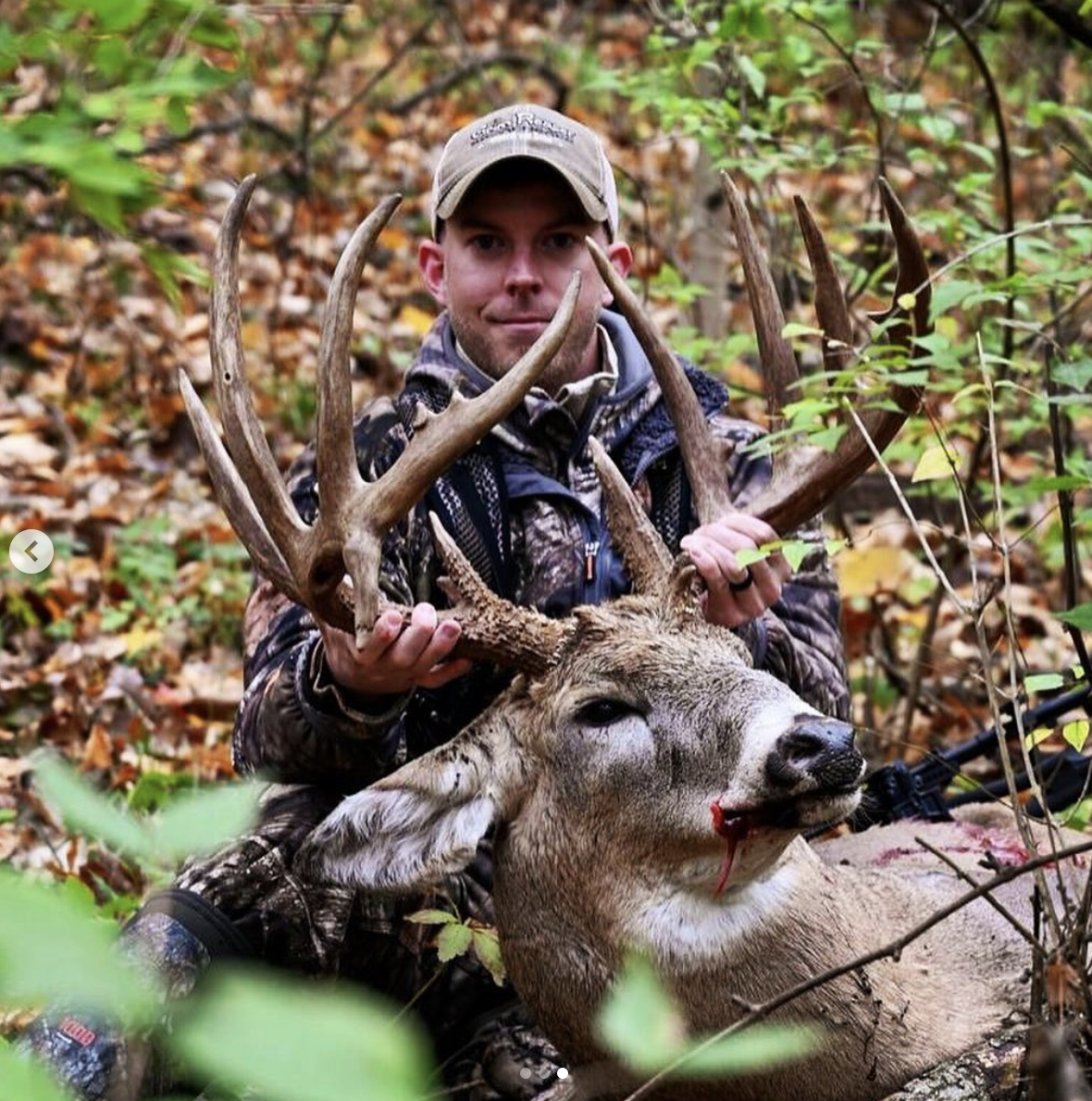
So Brent didn’t have much hope when he pulled a trail cam card on Nov. 4 and discovered photos from Nov. 1 of a new deer: a truly giant buck with a double mainbeam on his left side.
The property the deer was using, while private, “is basically public ground” with the number of hunters who have secured permission on it over the years. But it’s also a spot with good genetics, and the place where Justin and Brent cut their teeth as bowhunters in the early 90s. Brent had hung a few stands there over the summer. But without any enticing bucks on the place, and after his cameras got tampered with, he almost pulled everything off the property to focus his attention elsewhere. Instead, he left one trail cam.
“My jaw just about hit the table,” Brent says of looking through that camera’s photos. “The first picture I got of him was a profile shot from the left, and it’s just a wad of antler and main beams. I about lost it. I was like, Holy crap, who is this?”
It was cool to get pictures of such a big deer—the biggest buck Brent had ever had on camera, except for one buck on one of his Whitetail Properties listings nearby. (Justin had run all the trail cameras that captured the 328-inch world record buck in 2018.) But the odds of actually killing this new buck seemed slim. And at that point in the season, Brent was still hunting the Gray Ghost rather than the 200-inch deer. Justin, meanwhile, was hunting for the double-main-beam buck every chance he got.
“It sounds silly to say, because the world-record deer came off a different farm, but I really think the genetics on this farm are the best we’ve got. It’s unreal the number of big deer around that area,” Justin says. “It’s also hard to talk yourself into going there, because of all the other hunters.”
Brent didn’t start to take this buck seriously until he pulled the card a second time, with the deer making three or four appearances. One was an hour before daylight on Nov. 15, and Justin and Brent realized they might have a legitimate chance to kill a 200-inch buck.
On Nov. 17, Brent hunted the morning and, after watching a dog chase a doe around the property, almost didn’t go back that evening. But the wind was perfect, and forecasted to shift in the morning. He decided to hunt it while he could.
RELATED: The World-Record Buck, Episode 3
After he settled in his stand, he watched a few smaller bucks chasing does a couple hundred yards off. The wind died as the evening wore on, so when he heard a crunching noise at 4 p.m., it didn’t take him long to locate its source. A doe stood 85 yards away and, as Brent watched her through his binos, he caught more movement.
“A deer lifted his head, I saw the double main beams come up, and thought, Holy cow, there’s my boy.”
Wherever the doe went, the buck followed. She pulled him over a ridge, to the north and out of sight, and Brent figured that was that. But not long after, a little buck squirted over the ridge, the giant deer pushing him back and down into the timber before returning to the north. The two bucks repeated this another time. Twenty minutes later, Brent heard more movement, this time from the northeast. He could tell it was two deer, a doe and a buck, but he assumed it was another pair.
“I really didn’t think it was him,” Brent says. “But they finally got within 50 yards, and it was getting dark, maybe 10 to 15 minutes of light left, and I figured I’d better check so I didn’t get caught off guard if it was him. And sure enough, it was him. I couldn’t believe it, they had circled around.”
Although the doe stepped into range a few different times, Brent never had a shot at the buck. They milled around, then lingered on a ridge for 10 minutes, light fading all the while, until the doe tried to head back into a field. The buck cut her off at 25 yards, and Brent still didn’t have a shot.
“I thought I was going to be there until it was too dark to see, then I was going to be stuck there.”
Finally the doe broke and slipped through one of his shooting lanes. Brent knew the buck would follow, and drew, with just three minutes of legal light left. When the buck appeared in the lane, Brent grunted once and loosed the arrow. He watched the lighted nock punch through the deer and lodge in the ground.
“The buck ran about 25 yards and I was just sitting there praying, Go down, go down, go down. He started to get wobbly in the back end, then gain his posture, then get wobbly again, and crashed.”
Brent watched the buck move his head one more time after he fell, but it was so dark, he couldn’t tell if the deer was dead. He sat in the tree for 20 minutes, 35 yards from his biggest buck ever, not knowing whether to climb down or stay parked for an hour or two to make absolute sure he didn’t bump a wounded deer. But after the buck had been still for so long that he was surely dead, Brent climbed down and walked up on his personal best buck: a 204-inch deer with a double main beam. The deer had fallen just 100 yards from the same spot where Brent had taken his first shot at a big buck, back when he wasn’t old enough yet to drive. He missed that first buck (”I lost my cool back in the day—I shook so bad I shook the arrow off the rest”), but he’s come a long way since then.
Perfect Unison
The Cearlocks have a lot of factors working in their favor, not least of which is that they live in Eastern Illinois—an area with abundant agriculture and excellent genetics. It’s pretty tough to kill big deer if they don’t exist where you hunt. But their presence is no guarantee, either.
“We know we’re fortunate to grow up and to live where we do,” Justin says. “I also think we put in a lot more time and effort than most people. I think that shows. We’re also willing to pass deer that people aren’t. There are a lot of people out there that are way better woodsman than we are. It just comes down to time and patience.”
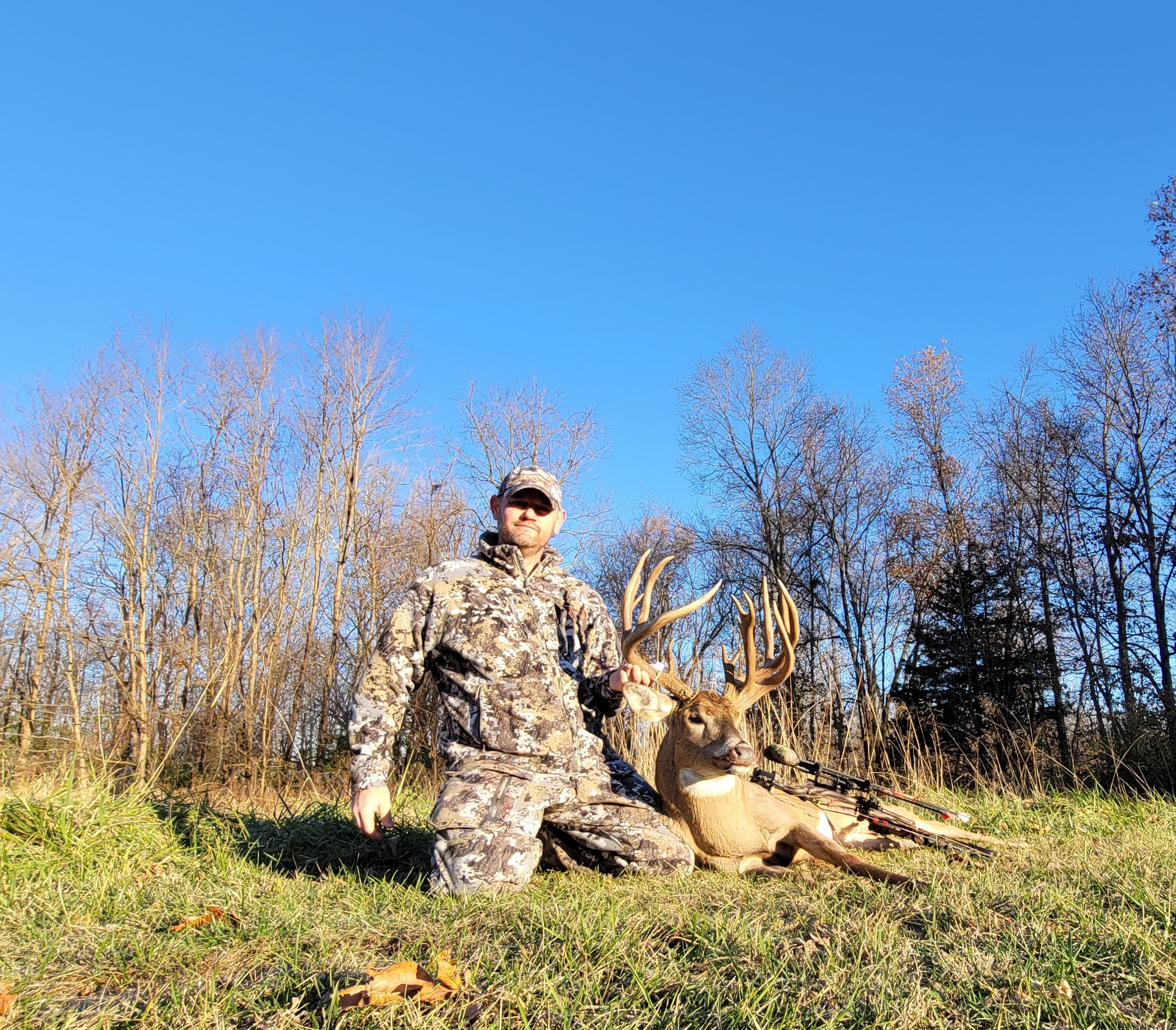
The fall of 2020 marked Justin’s 30th deer season—and his 29th bow season—with his younger brother Brent trailing by just a few years.
“We’ve been hunting together a long time,” says Justin, 42. “And there were definitely years where we were pretty competitive. Not that we weren’t happy for the other one if he killed a deer, but at the same time, we wanted it for ourselves. But sometime in the last 10 years or more, we got to the point where if one of us gets a deer, it’s a victory for both of us.”
“Some of that comes with age,” says Brent, who is 39. “We’re getting to be at an age where you’re probably a little less competitive. Also, we’ve been successful. That helps, when you’ve got several good deer. You can be happy for others when you’re not getting something.”
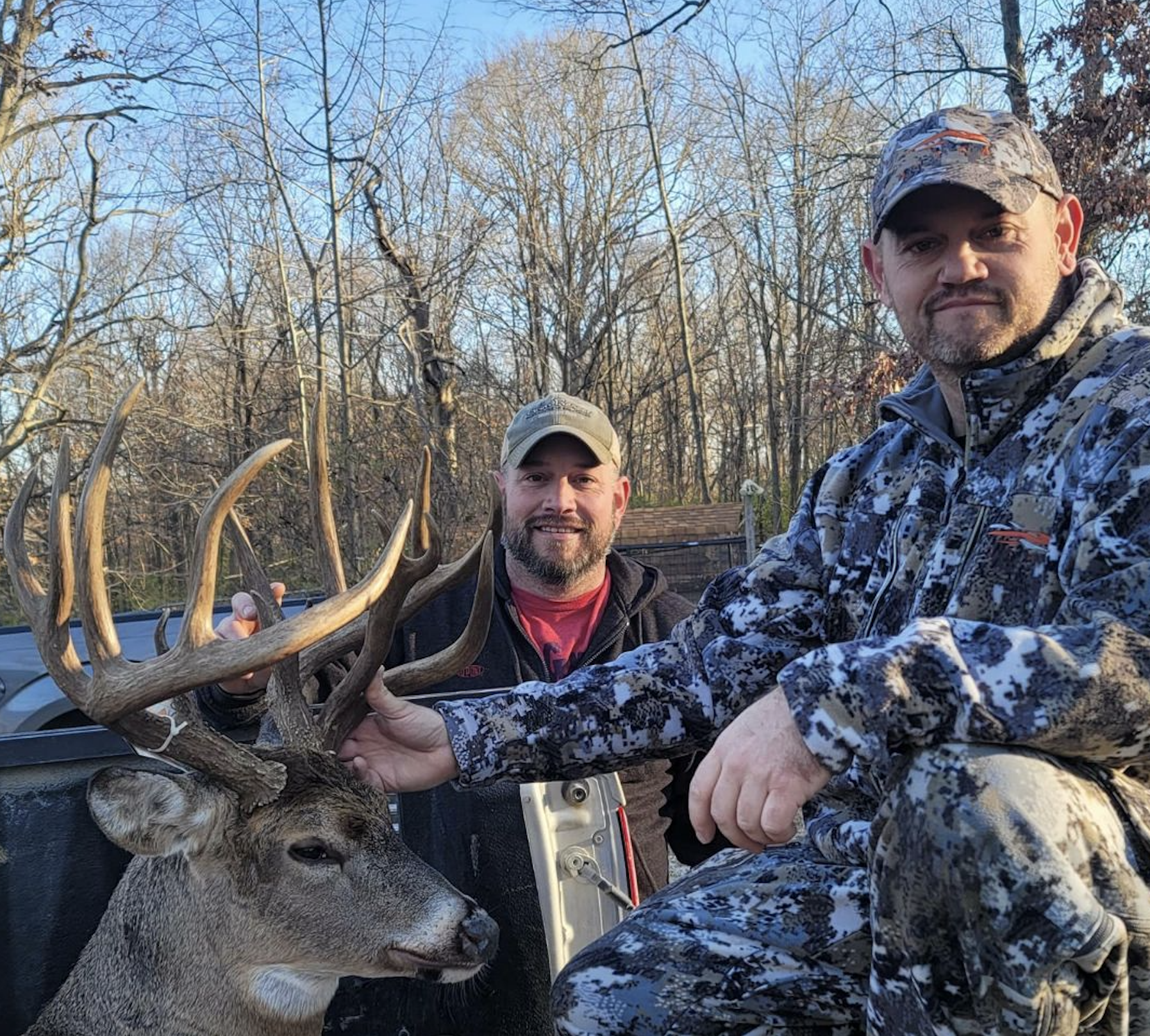
While Brewster’s world-record buck will likely be the biggest deer to ever show up on the Cearlocks’ cameras—328 7/8 inches is hard to beat by any measure—the Cearlock’s don’t think of it as the pinnacle of their deer hunting careers. And while they might focus on killing mature deer, they know there’s more to deer hunting than inches of antler.
RELATED: The Story Behind Mufasa, the Biggest Whitetail Deer Ever
“It was awesome to have Mufasa,” says Justin. “But I can pick four or five moments of deer hunting that top that for me in my life, and very few of them are actually me shooting a deer. Like being with my boys when they get one. Or the morning Brent shot his first good buck, back before cell phones.”
And while Brent killed a 200-plus-inch buck this season, it doesn’t feel quite as special as the hunt for a deer with history.
“Honestly, I killed that great big one, but I’m probably more satisfied with the old buck because of the tie I had to him,” says Brent, laughing at himself a little. “Don’t get me wrong—I am stoked to kill a buck like the big one. And I probably wouldn’t trade him if I had to pick, because a 200 is so rare. But if I’m really being honest with myself, the older buck means more to me.”
But no matter how old the Cearlocks get or how skilled at bowhunting, luck and the element of surprise still have a role to play. And that’s part of the fun.
“You can do everything right, and still not have it happen,” says Justin.
“There’s only so much work you can put into it,” agrees Brent. “It’s a wild animal. He can go wherever he wants, whenever he wants. So there’s definitely some luck to it, no matter how much planning and work you’ve done. And when you do get lucky, you’ve got to capitalize on it. If you get those chances, you better make them count.”

